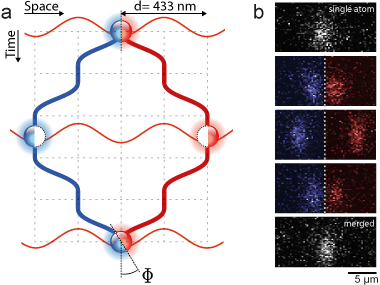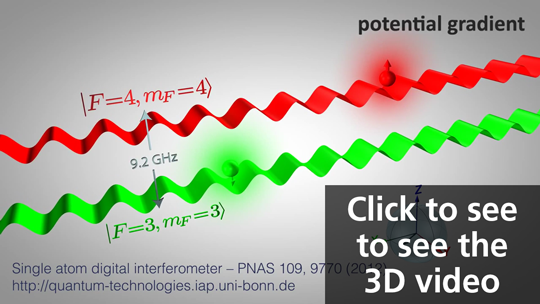
We show that the wave function of a single atom can be precisely manipulated in a way that resembles what happens to a photon traveling in a Mach-Zehnder interferometer: a single atom is split over a mesoscopic distance and coherently recombined to read out the quantum phase information. By using trapped atoms in a spin-dependent optical lattice, the interfering quantum paths can be steered with very high precision, while the atomic wave packets remain tightly localized.
In our experiment, we could demonstrate a coherent splitting over up to 10 µm by implementing a sequence of about 100 discrete elementary quantum operations. By "programming" longer sequences of operations we could design arbitrary interferometer geometries, for instance, a double diamond interferometer. In this way, control over neutral particles is pushed to a new level. To know more, you can read our PNAS publication or also have a look at the press release.
The video below helps visualize the functioning of our digital interferometer. The internal spin state of the atoms is often flipped, while the two optical lattices are moved back and forth with respect to each other. Spin flips protect the atoms against decoherence analogously to what happens in a spin echo.










